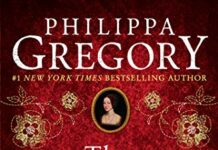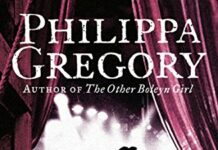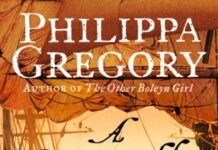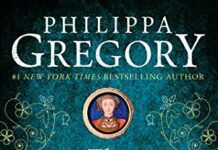
Ebook Info
- Published: 2011
- Number of pages: 514 pages
- Format: Epub
- File Size: 0.49 MB
- Authors: Philippa Gregory
Description
1553. King Edward is on his deathbed, and the future of the Tudor dynasty swings perilously.
Forced out of Spain by the Inquisition, Hannah Green arrives in a volatile kingdom. She is identified as a seer and sworn into the service of Robert Dudley, the son of King Edward’s protector and a key player at court. Her task: to keep watch on Princess Mary, the forgotten heir.
Mary’s grip on the Crown is fragile. Elizabeth, Mary’s half-sister, is ready to take England’s throne. Caught in the rivalry between the daughters of Henry VIII, Hannah must navigate her way through a treacherous court if she is to survive.
User’s Reviews
Review Praise for Philppa Gregory:`Gregory’s research is impeccable which makes her imaginative fiction all the more convincing’ Daily Mail`Gregory is great at conjuring a Tudor film-set of gorgeous gowns and golden-lattered dining. She invokes some swoonsome images…while the politics are personal enough to remain pertinent’ Daily Telegraph`Subtle and exciting’ Daily Express`Written from instinct, not out of calculation, and it shows’Peter Ackroyd, The Times`For sheer pace and percussive drama it will take a lot of beating’ Sunday Times –This text refers to the audioCD edition.
Reviews from Amazon users, collected at the time the book is getting published on UniedVRG. It can be related to shiping or paper quality instead of the book content:
⭐ This is a very engaging novel centering on a Hannah Verde/Green. She is a young (secretly) Jewish girl who has just escaped the Spanish inquisition to England with her father, who is a bookseller. In an unusual twist, her father — in an attempt to protect her — has disguised her as a boy. A member of the royal court comes to the humble bookshop one day, and Hannah’s father “begs her for a fool” at Court. When the only living son of Henry VIII dies, his daughter, by Katherine of Aragon, Mary, takes the throne, and Hannah is swept into Mary’s service. She also comes to know another royal princess, Elizabeth, who is next in line for the throne.While Hannah may be a fictitious character, there is a great deal of history packed into this novel having to do with England’s relationship with Spain and France at that time, the plight of Jews all over Europe (including in England), the shifting attitude towards religious freedom in England, and the restrictive nature of a woman’s life in the 16th century. And of course, there is a love story intertwined throughout the book. Hannah, who is a gangling adolescent at the beginning blossoms into a beautiful young woman by the end. I don’t want to give too much away, since I want you to enjoy the book as much as I did!
⭐ I have read almost everything this author has written about England during the Middle Ages. This novel did not seem to have been as popular assome of her other books. I bought it because I was running out of her books to read ! What a pleasant surprise- I think it is one of her best !If you are a Philippa Gregory fan or a fan of this genre, don’t miss this book !
⭐ Is the Queen’s fool a girl or a boy? That wasn’t the biggest secret that Hannah Green kept. The other was her origins, her faith, the fate of her mother during the Inquisition of Spain. Now living in England with her book publisher father, another of her secrets, her Sight, brings her to the attention of Sir Robert Dudley during the short reign of Edward V.Because of her Sight, Dudley brings Hannah to Court as a Holy Fool. Dressed androgynously, Dudley employs Hannah to be his eyes and ears in court and even more importantly during his imprisonment in the tower.Hannah maintains her position in the court even after Edward’s death while her betrothed, another marrano, Daniel Carpenter, who is a physician in training and the beloved son and brother to his household.Hannah manages to both ingratiate herself to Queen Mary and Princess Elizabeth, often acting as a go spy for both the Royal heirs for Dudley. She is called upon by him and his confidant, Dr. Dees, to foresee the future. And while her gift is not always biddable, much of what she reveals does come to pass.Philippe Gregory is the master of Tudor historical fiction, and this book is not a disappointment.
⭐ It is the middle 1500s. Religious dissent and religious persecution rage across Europe. The Hugenots are persecuted in France. The Grand Inquisitor of Spain has Jewish people burned at the stake. The charge of heresy is rampant. In the context of the times, heresy means any speech, any body language (such as looking away during Mass or reading the Bible in English), can bring a charge of heresy with burning at the stake to follow. Any speech or action whatsoever, however innocent, is suspect as the Protestant factions grow and threaten the power of the Roman Catholic Church.In England, there is the problem of heresy as religious persuasions continue back and forth, setting the Crown itself swaying precariously between supposed heirs. Many of the Lords support one religious faction and when that trend is persecuted, the same Lords follow the new trends of the latest “in” religious group. Some don’t make the change quick enough, not reading the changing wind well enough or actually and rarely having a religious conviction. They are beheaded, en masse.All this brings us to Gregory’s brilliant narrative structure chosen for “The Queen’s Fool.” The narrator’s name is Hannah Verde (in England, changed to Hannah Green). She lived in Aragon, Spain, with her mother and father. As a child, she saw her mother burned at the stake as a heretic. Her mother and father are Marranos, who are Jews who converted to Christianity but in the privacy of darkened homes, practice Judaism. Her mother was somehow found out and after her burning, the father escapes with Hannah, dressed as a boy (much safer for a young girl at that time), and they live temporarily in many European countries. Finally, some members in the Netherlands arrange documents for their flight to England. No European country wanted Jews at that time, so their lives in England are lived on the sword edge of survival. Her father is a rare book seller and has hundreds of manuscripts for sale and perusal which are outlawed as heresy by the current religious faction in England.Hannah’s great adventure as observer of the English Court begins inadvertently, when she is standing outside her father’s bookstore talking passersby into the shop. She sees three Lords approaching. In the bookstore, she asks two of them where the third one is. There have only been two of them and they question her about the third one she has seen.Hannah has a gift. She has Second Sight, which comes and goes at its own volition. It cannot be forced. Other people saw two Lords. She saw three. One of the two is Lord Robert Dudley, of the House of Northumberland, which house is in the ascent in the Royal hierarchy. He is excited about her second sight and dressed as a boy, she ultimately enters the service of Queen Mary and Princess Elizabeth as a “fool” but actually as his spy.The further machinations of the grasping of the Throne are narrated by Hannah, as she goes back and forth between the two heirs, Mary and Elizabeth, and spies for Robert Dudley. She becomes the Queen’s Fool and in the background, is used for her second sight and her spying abilities.Now, what is a Queen’s Fool? A Fool was dressed in a special costume of differing colours on the arms, the legs, and wore funny hats. If you’ve read Shakespeare, you will know that a Fool was not only to lighten the load of the Crown and make the Monarch laugh, but he was also a trusted companion, someone the Monarch could be himself with, someone there who wanted no political gain, someone there to show him he was not alone. The fool was loyal because his livelihood – and his head – depended on it. The Fool was no fool.Hannah is used to hiding her real identity and feelings, from having been persecuted and dashing through one country after another to find sanctuary, and the horrifying memory of seeing her mother burned in front of her. She is used to dancing over the flames and manages to satisfy all parties without damaging herself.The narrative is brilliant, since we see the events unfold through the eyes of an outsider, as we are outsiders, reading about it all.It gives a sense of immediacy and the pages fly by while the reader cannot seem to separate herself from the narrative.It also straightens out a lot of confusion about these events. I remember taking this history in school. I was bored, confused and really didn’t care. I memorized enough to pass the test and thought – Ho Hum! about it all. But reading Gregory, I am not only fascinated by the historical facts, but understanding them and can hardly wait to turn the page to see how it all turns out, as she also explores other important historical events, such as the battle for Calais, in which the English lost their French stronghold. Of course, Hannah is also witness to this.The author must be commended for inserting “the people” in the events and showing their reactions. History often is just a story of wars with dates and the upper-upper class. Memorize it all and one can pass the test. But I used to think – what of the people? What did they think? Did they react? How did they react?With all of Gregory’s books, there is no need to wonder. The people have pride of place in this history and Gregory documents it.One note of caution. Hannah, unlike historical figures in the book, is fictional. But the events that shape her life are historically accurate.I bought the pocket book editions of the books of the Tudor era at Amazon. It was actually a mistake. I was looking for something else and found these gems. So I bought the whole series and have not enjoyed reading about history this much for many decades.Don’t make my mistake. Go purposely to find them. Buy them. Turn off the tv. Forget the housework (it will still be there when you’re not). Simply enjoy,
⭐ Philippa Gregory does a really good job with the nuanced picture of Queen Mary whose life was so uneven and dysfunctional. She also does a very good job describing the fear in the general population during the years of Queen Mary’s reign. As described, there were regular, frequent burning of heretics (“heretics” according to Queen Mary and her advisers) and it has been described by historians as a reign of terror. It was especially dangerous for Jews as described by the book’s protagonist. So those aspects of the book create an important and realistic backdrop for the book.However, there are two things wrong with the book – first, the “cover” story about the young girl who plays the Queen’s fool is fairly unbelievable. Secondly, the book lacks character depth – in a good book you should know how the characters feel because of what they say and do, not because the narrator has to continually tell you. I felt like Hannah was inconsistent. But, I loved her spunk!After reading this book (which we read for our book club) I read a non-fiction history, “The Wives of Henry the Eighth” by Martin Hume. This book provides the background to significantly help understand the deeply unstable environment in which Queen Mary was raised. It vividly evoked the terror and horror of Henry VIII’s reign as well as the egocentric, un-motherly behavior of Katherine of Aragon, Queen Mary’s mother. If you want to enjoy The Queen’s Fool more, first read “The Wives of Henry the Eighth”.
⭐ Of you like historical fiction Philippa Gregory is the author for you!!! This book is part of the Tudor series and takes us into the life of queen Mary’s and queen Elizabeth’s court fool who isn’t a fool at all!!! All of the books in this series are just written with so much information! It’s amazing to see history written through the women of the court instead of always from the men’s point of view…
⭐ The Tudor history was fascinating, as always. How and what the sisters did to survive was intriguing. A great tale of drive and survival.Hannah’s story, also of drive and survival, is what truly makes this story stand out. The challenges of The People need to be taken to heart. A good education of religious persecution that we still need to be aware of, and combat, five hundred years later.
⭐ I like the whole “Tudor” series for its characterizations and views into what that court and lifestyle was like. However, this one is my favorite. It’s a view from someone who must hide in full view; a total alien to the courtly lifestyle who must figure out which alliances to keep, and which secrets, to preserve her life as she becomes increasingly part of this new world. The author makes it clear how difficult it was to be Jewish in Tudor England; even before the focus on doctrine given by the reformation it was a life of defense and hiding. And, the author uses that to show us what the court would be like, and how one would get swept up into it, as a basically normal person trying to get by. I found it very interesting.
⭐ What a fascinating story of a young girl émigré escaping the Spanish Inquisition! This poignant portrait of the beloved only child of a Spanish bookseller quickly envelopes the reader into Tudor England and then Gallic France where her father and betrothed escape when England is thrown into turmoil as the Catholic Mary ascends the throne.The hardships she endures, the tough choices she is forced to make and her life as a secret Jew make a delicious read. I love Phillipa Gregory’s writing. I got a great deal through one of the many book clubs I subscribe to (BookBub, Sweet Deals, etc.). If you’re a passionate reader belonging to a club saves you hundreds of $ if you’re okay with e-reading.
⭐ I love Philippa Gregory’s books, especially about the Tudor era. This one slides over into the relentlessly gloomy. It was a perilous time for high and low, Catholic or Protestant by turns; but the heroine’s thoughts never stray from the imminent possibility of death because she is a “converted” Jew, although she gains a privileged position with both of Henry the VIII’s daughters at court. Likewise both Queen Mary and Princess Elizabeth dwell nearly every waking moment on the possibility they will be either overthrown and put to death or put to death for treason. Yes, but there had to be more to these women. Mary enjoys brief happiness on her marriage, soon dashed. Elizabeth shakes in her boots virtually all the time. Elizabeth was a brilliant woman, considered to have the genius IQ her father, Henry, is also deemed to have had. Yet Gregory has Mary accuse her of being a bastard by a lute player, which has to be taken as Mary’s hatred and paranoia. Elizabeth had too many traits in common with her royal father for anyone to believe this slur was anything but a false accusation used to send Anne Boleyn to the block. Gregory does like to revise general views of historical characters, and portrayed Anne Boleyn as a raving shrew in THE OTHER BOLEYN GIRL, with Katherine of Aragon rightly the victim she was. Anne Boleyn was calculating and selfish, but lost her head because she didn’t bear Henry a son. However, I see a pattern emerging of soft-pedaling of the excesses of the old Catholic order and the Inquisition, while the Protestant monarchy that prevailed is denigrated by unpleasant accusations about Elizabeth, and there is inexcusable downplaying of Bloody Mary’s campaign of mass murder of suspected Protestants by burning at the stake. Much blood was spilled before Mary, with priests and Catholics true to their faith masquerading and in hiding; but Elizabeth did not start burning Catholics when she took the throne. That she was a callous seductress even at age 14, rather than an awakening teenaged girl chased and perhaps seduced by Thomas Seymour, is ludicrous. Supposedly she even–gasp–swung her hips when she walked to seduce Mary’s husband, Phillip. That doesn’t play for me. It was a tightrope she walked, not instead her wicked nature to be a tease. She probably wasn’t a virgin queen, only an unmarried one; but I think Gregory tries too hard to paint her as less sympathetic than Mary, when Mary was a woman almost addled on the subject of religion and devoid of conscience at what she did. Not that a lot of people weren’t then, and still are now–witness Northern Ireland and the Islamic terrorists who bomb innocents in the name of their religion. I have to confess much as I love historical fiction, and know religious fanaticism played a threatening role in that world, I am getting bored with characters who natter on about it all the time. I disliked much about THE BIRTH OF VENUS by Sarah Dunant for this reason–I want a human story to dominate in a novel, not constant thoughts of saints or what is the correct route to heaven. Hannah Verde is the protagonist, yet she is dwarfed by the events portrayed; and there were contrived events that conveniently sent her back to England when she escaped that clunked in the plot. This isn’t like Philippa Gregory, not the writer I’ve admired. I now hesitate to read on in her Tudor series.
Keywords
Free Download The Queen’s Fool in Epub format
The Queen’s Fool Epub Free Download
Download The Queen’s Fool 2011 Epub Free
The Queen’s Fool 2011 Epub Free Download
Download The Queen’s Fool Epub
Free Download Ebook The Queen’s Fool





